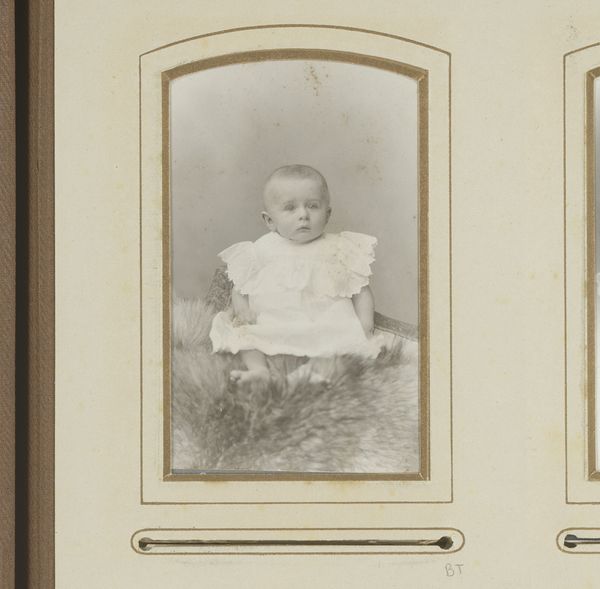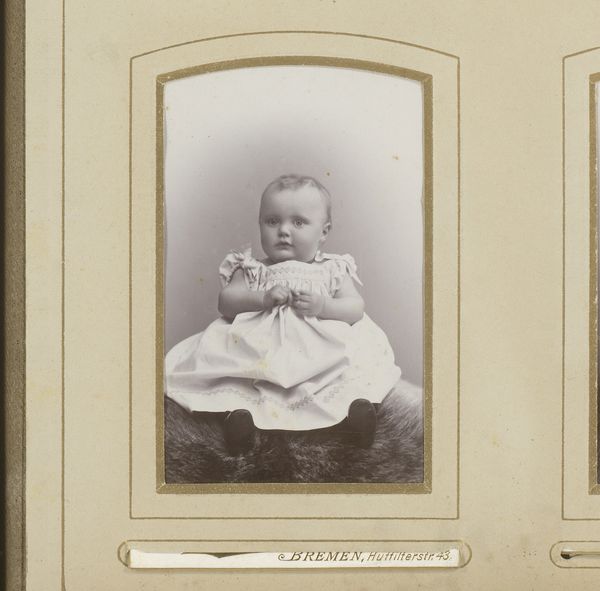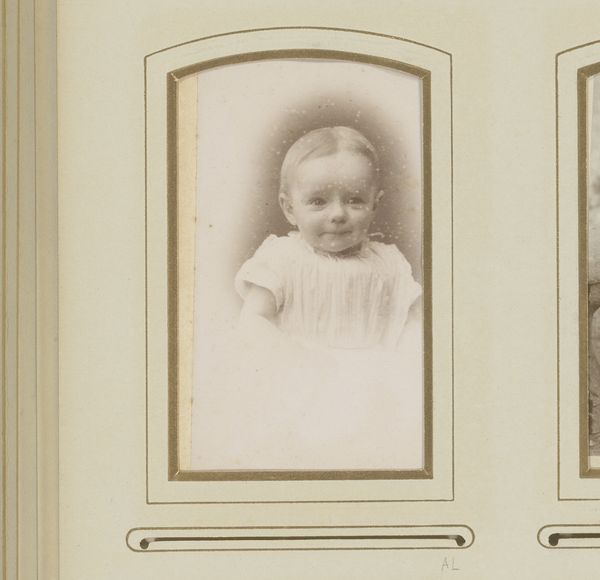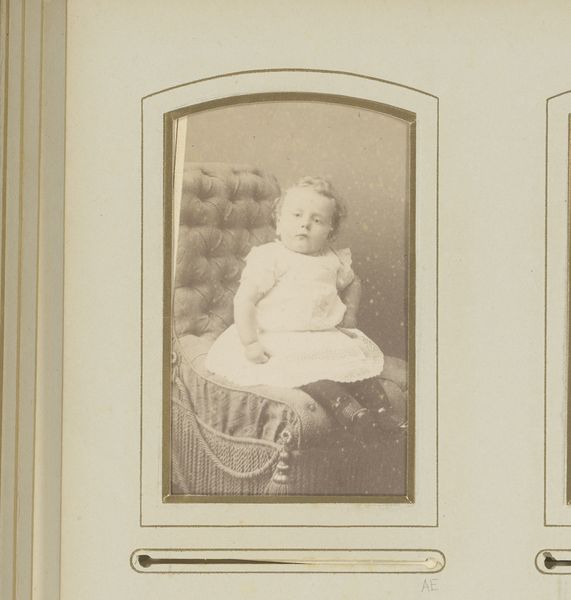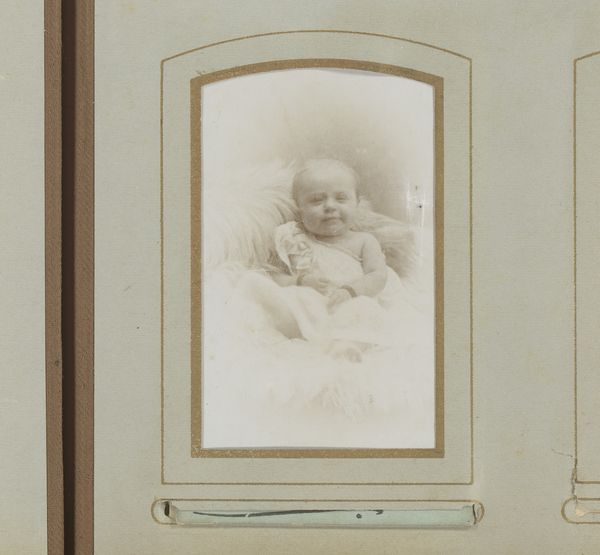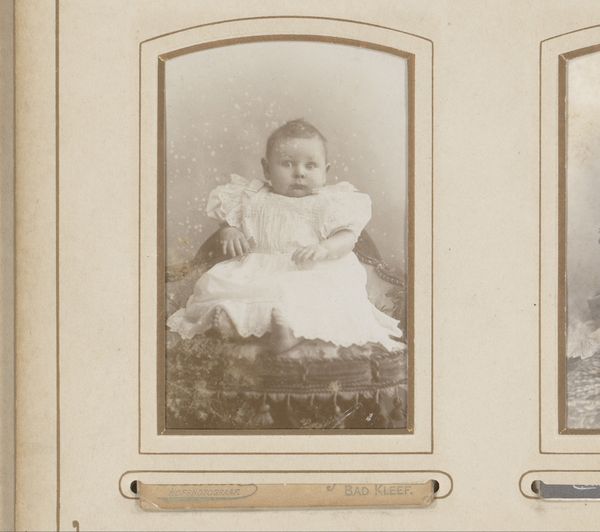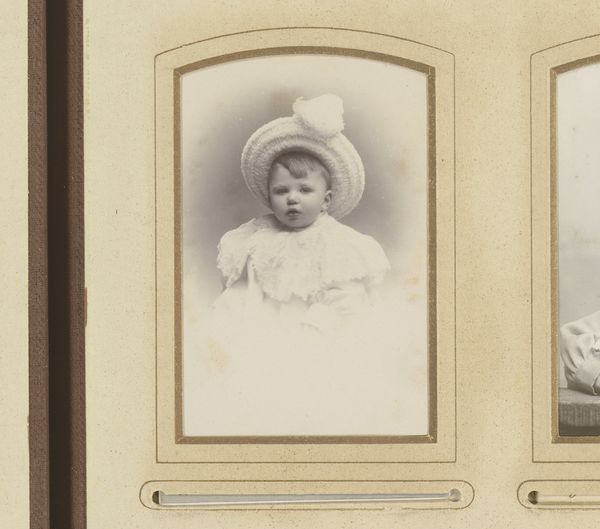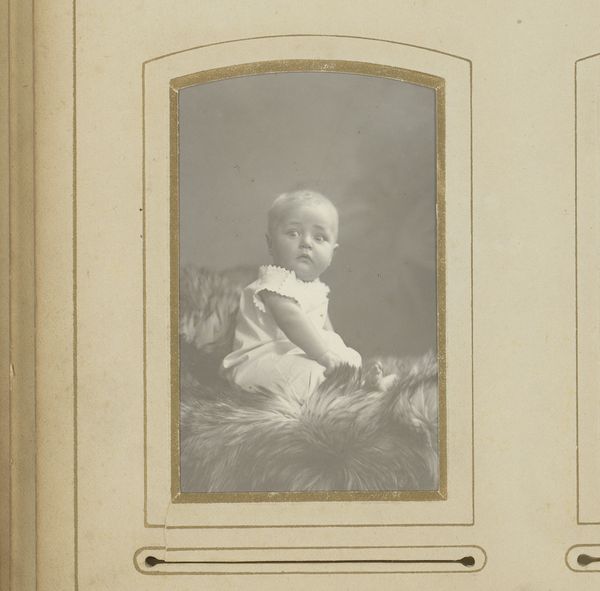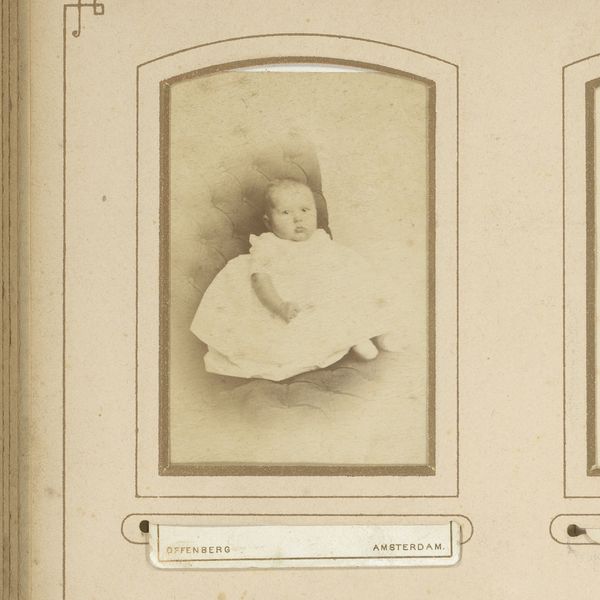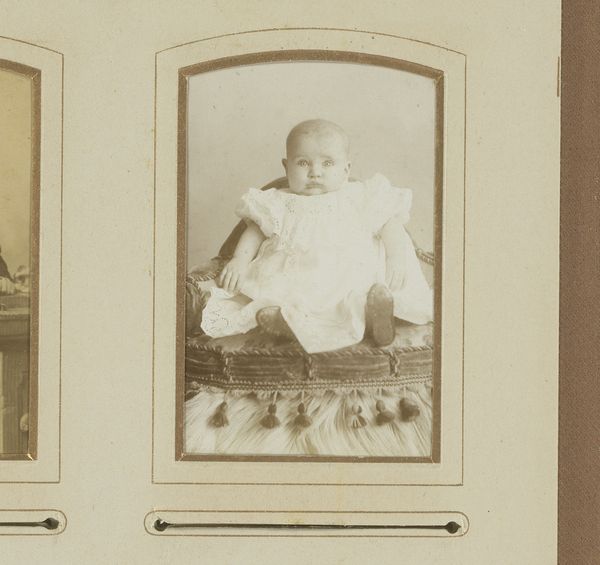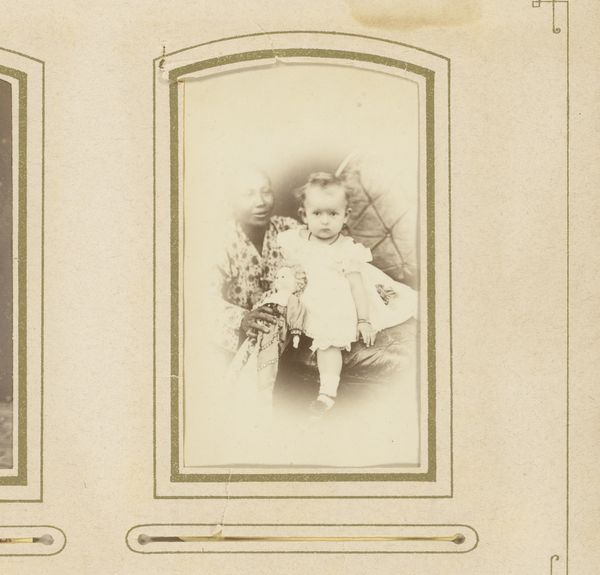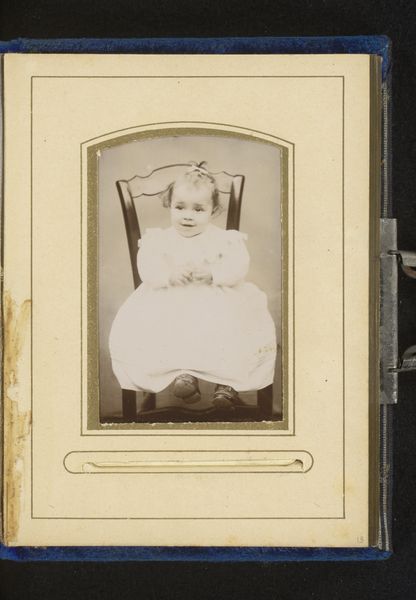
photography, gelatin-silver-print
#
portrait
#
still-life-photography
#
photography
#
gelatin-silver-print
#
realism
Dimensions: height 84 mm, width 50 mm
Copyright: Rijks Museum: Open Domain
Curator: Let's take a look at "Portret van een zittende baby," or "Portrait of a Seated Baby" by J. Reverdy. We believe it dates to somewhere between 1880 and 1920, and is an example of a gelatin-silver print. Editor: My first impression is how ghostly the image seems, almost ethereally pale, yet very realistic. The soft light emphasizes the baby's wide eyes and rather serious expression. It is simultaneously precious and slightly haunting. Curator: Absolutely. Portrait photography in this period was becoming increasingly popular. The accessibility of photographic materials meant that even middle-class families could afford to capture these intimate moments. What's fascinating to me is the social pressure to present a very specific image, often carefully posed, to communicate a sense of prosperity and stability. Editor: Yes, and it’s interesting to consider the physical production itself. A gelatin silver print involved coating paper with a light-sensitive emulsion. The labor involved—from mixing the chemicals to carefully exposing and developing the image—demonstrates a specific, almost alchemical process. Each print then, becomes a record of a specific time and set of actions. Curator: Right. The framed presentation too. A very common aesthetic for the turn of the century family album; suggesting a preservation of memories intended for public and future family consumption. The act of collecting these images becomes a way of constructing and preserving a certain history. Editor: The choice of materials, gelatin, silver, and paper, are hardly accidental. They represent a confluence of science, industry, and art coming together to create something of enduring sentimental and historical value. What seems so "standard" now reflects huge technical changes in how imagery gets manufactured. Curator: Agreed. Even the "still-life" quality you noted earlier seems part of this trend to use the art of photography to pause reality and capture people as treasured possessions of that reality. Editor: This little print encapsulates the collision of material processes, labor, and burgeoning consumerism during the late 19th and early 20th centuries, framed, literally, in nostalgia. Curator: A somber, enduring encapsulation indeed. The cultural demand for accessible, preservable family imagery shifted visual culture in demonstrable and democratizing ways.
Comments
No comments
Be the first to comment and join the conversation on the ultimate creative platform.
